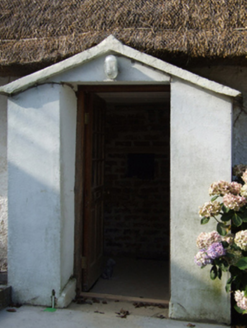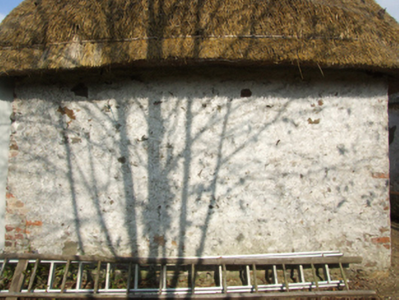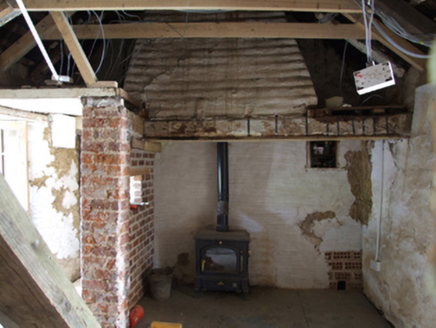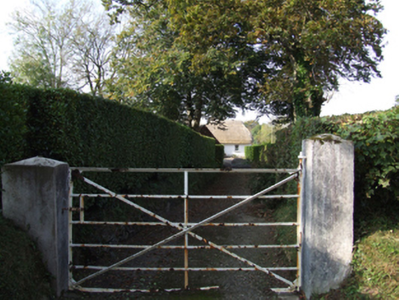Survey Data
Reg No
15703754
Rating
Regional
Categories of Special Interest
Architectural, Social
Original Use
Farm house
Date
1700 - 1840
Coordinates
299964, 124743
Date Recorded
14/10/2007
Date Updated
--/--/--
Description
Detached four-bay single-storey lobby entry thatched farmhouse, extant 1840, on a rectangular plan off-centred on single-bay single-storey gabled windbreak. Undergoing "restoration", 2007. Chicken wire-covered replacement hipped oat or wheat thatch roof on collared timber construction, exposed hazel lattice stretchers to ridge having exposed scallops, cement rendered central chimney stack having concrete capping supporting terracotta pot, and exposed hazel stretchers to eaves having exposed scallops. Limewashed lime rendered battered walls with concealed red brick flush quoins to corners. Square-headed off-central door opening with concrete threshold, and concealed dressings framing replacement glazed timber panelled door. Square-headed window openings with shallow sills, and concealed lintels framing six-over-six (south) or one-over-one (north) timber sash windows having part exposed sash boxes. Interior including lobby retaining "spy hole". Set in landscaped grounds with cement rendered piers to perimeter having moss-covered shallow pyramidal capping supporting flat iron "farm gate".
Appraisal
A farmhouse identified as an important component of the vernacular heritage of County Wexford by such attributes as the rectilinear lobby entry plan form off-centred on a characteristic windbreak; the construction in unrefined local materials displaying a battered silhouette with a failing surface finish revealing sections of "daub" or mud; the disproportionate bias of solid to void in the massing; and the high pitched roof showing a replenished oat thatch finish. Having been well maintained, the elementary form and massing survive intact together with substantial quantities of the historic or original fabric, both to the exterior and to the interior, including crown or cylinder glazing panels in hornless sash frames: an unfinished "restoration", however, may determine the ongoing architectural heritage status of the farmhouse. Furthermore, adjacent "tin roofed" outbuildings (extant 1840) continue to contribute positively to the group and setting values of a neat self-contained ensemble making a pleasing, if largely inconspicuous visual statement in a sylvan street scene.

















